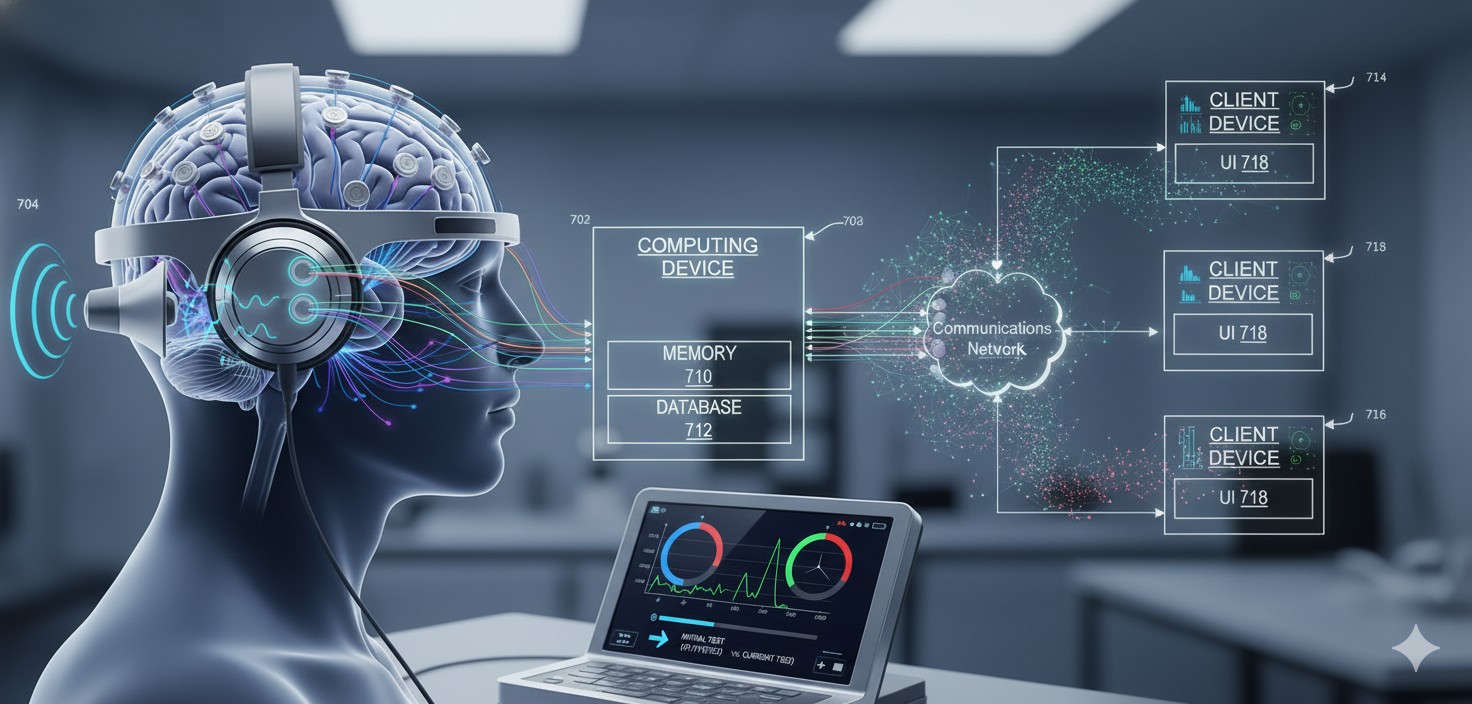A Biological Marker for Concussion
NU 2016-016
INVENTORS
- Nina Kraus*
- Trent Nicol
- Travis White-Schwoch
SHORT DESCRIPTION
This technology provides a method for objectively identifying non-penetrating brain injuries by analyzing the brain’s frequency following response (FFR) to an acoustic stimulus. It offers a non-invasive alternative that improves diagnostic precision and enables effective recovery monitoring.
BACKGROUND
Current concussion diagnostic methods rely heavily on subjective symptom reporting and invasive biomarker tests. Neuroimaging and electrophysiological techniques have shown differences at group levels but fail to reliably assess individual cases. These limitations create an urgent need for an objective and non-invasive diagnostic approach.
ABSTRACT
 The invention uses electrodes to capture voltage potentials from the brain while the subject listens to a complex acoustic stimulus. It actively analyzes components of the frequency following response, such as the fundamental frequency, neural timing, response amplitude, and stimulus-response correlation. The technology distinguishes non-penetrating brain injury by identifying anomalous values in these components. It further enables recovery monitoring by comparing initial and subsequent tests to track improvements or deterioration.
The invention uses electrodes to capture voltage potentials from the brain while the subject listens to a complex acoustic stimulus. It actively analyzes components of the frequency following response, such as the fundamental frequency, neural timing, response amplitude, and stimulus-response correlation. The technology distinguishes non-penetrating brain injury by identifying anomalous values in these components. It further enables recovery monitoring by comparing initial and subsequent tests to track improvements or deterioration.
MARKET OPPORTUNITY
The global market for Traumatic Brain Injury (TBI) and concussion diagnostics represents a substantial and rapidly growing commercial opportunity. Market size valuations from recent years range from approximately $3.4 billion to $9.6 billion, with multiple analyses projecting a robust expansion through the next decade. Projections indicate a consistent Compound Annual Growth Rate (CAGR) between 4.8% and 7.6%, forecasting market values to potentially exceed $18 billion to $24 billion by the early 2030s. This growth is fundamentally driven by the high global incidence of TBI, with an estimated 69 million cases occurring annually from sources including road accidents, falls, sports-related injuries, and military combat. (Source: Dataintelo, 2025)
DEVELOPMENT STAGE
TRL-4 - Prototype Validated in Lab: A laboratory-scale prototype demonstrates that key functions of FFR analysis accurately differentiate between concussed and non-concussed subjects.
APPLICATIONS
- Concussion diagnosis: Provides an objective detection method for non-penetrating brain injuries.
- Recovery monitoring: Tracks patient improvement through repeated FFR measurements.
- Sports medicine: Quickly evaluates athletes after head impacts.
- Military health: Assesses soldiers exposed to impulsive forces in field conditions.
ADVANTAGES
- Non-invasive diagnostic: Eliminates the need for intrusive blood or cerebrospinal fluid tests.
- Objective evaluation: Minimizes reliance on subjective symptom reporting.
- Real-time monitoring: Provides timely insights into patient recovery progress.
- Cost-effective: Reduces expenses compared to expensive neuroimaging techniques.
IP STATUS
Issued US Patent 10,588,536
Patent Information:
| Title |
App Type |
Country |
Serial No. |
Patent No. |
File Date |
Issued Date |
Expire Date |
Categories:
Life Sciences > Healthcare Devices, Tools & IT
Life Sciences > Biomarkers & Biomedical Research Tools
Keywords:
Biomarker
Brain injury
Devices
Diagnostics
Electrophysiology
Health IT
Medical device
Neurologic disease
Research tool